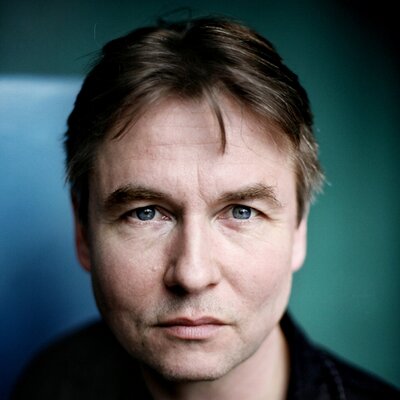Bruckner’s Seventh as it was meant to be heard, from Salonen, Philharmonia

Esa-Pekka Salonen conducted the Philharmonia Orchestra in Bruckner’s Symphony No. 7 on Sunday.
There was a moment in David Geffen Hall Sunday afternoon when conductor Esa-Pekka Salonen, standing in front the Philharmonia orchestra, seemed to be in the eye of a hurricane. Around him, the orchestra was furiously devouring the Scherzo of Bruckner’s Symphony No. 7.
The first of two Philharmonia concerts presented by Lincoln Center’s Great Performers series, this was a stirring performance of the beautiful Bruckner work, and an example of masterful musicianship—technique serving aesthetic understanding and clear, purposeful thinking.
In terms of musical meaning in Bruckner, there is a unique combination of delicacy and power—language that is almost at pains to be simple and polite while trying to communicate momentous ideas about one’s place in the universe. Bruckner often pulls out all the stops, but never for effect.
There were no interventions from Salonen. The orchestra’s playing demonstrated how clear was the conductor’s view of the score, how fine-tuned were composer and musicians. It all just went with a feeling of inevitability in every measure that grew in mass, meaning, and thrills as the music progressed.
A huge part of the overall experience was the orchestra’s sound, which presented as fine a Bruckner sonority as one has heard. Each section played with a balance of timbral beauty and heft that this music demands. The presence of the Wagner tubas stood out not for their novelty but how gorgeous they sounded in the Adagio. The blend and balance between sections was superb, a multi-layered lesson in the composer’s style. The orchestra created a moving, sonic power that went beyond objective analysis into pure sensation.
Even in the enormous climax of the Adagio, or the extreme points of energy in the Scherzo, the Philharmonia never turned shrill nor brittle, and the sound was always beautiful. The music articulated what was just beyond human experience and comprehension by perfectly outlining what could not be made explicit in notes and rhythms.
The opening movement was on the slower side of Allegro moderato, but not in itself slow—there was enough time to feel sensual pleasure in each phrase while the music itself flowed along with a smooth forward motion.
The violin section’s heavy down-strokes on the G-string at the beginning of the Adagio had a physical grip. In the Scherzo, there is a syncopated trumpet fanfare that finishes off each iteration of the long first statement. The musicians played it with a crescendo that had a heart-in-the-throat excitement, a slow start then rapid finish, like a huge, shining steel ball gaining momentum as it precipitated down a hill.
This was interpretation in the best sense, playing that sounded organic, a performance that sounded exactly how one imagined the symphony should go, even though one had never heard it sound so natural, logical, and familiar. Even for one who could anticipate every note in the score before it arrived, the experience felt new. No one element stood out as a cause, this performance was so fine because it was seamless, absolute, with ideal pacing throughout.
Bruckner, the great organist, heard the symphony in terms of his own instrument, transferring what he heard in his ears to an orchestra. The Philharmonia sounded like it was playing in the manner of an organ, a testament to his skill as an orchestrator and Salonen’s as a conductor.
Esa-Pekka Salonen, cellist Truls Mørk, and the Philharmonia present Sibelius’ The Oceanides, Salonen’s Cello Concerto, and Stravinsky’s complete Firebird, 8 p.m. Monday. lincolncenter.org